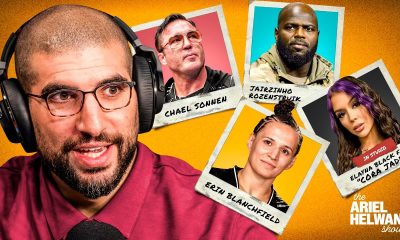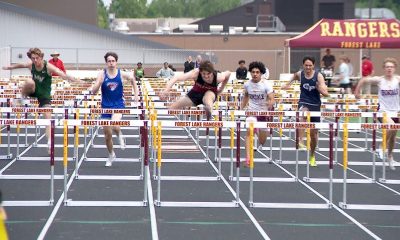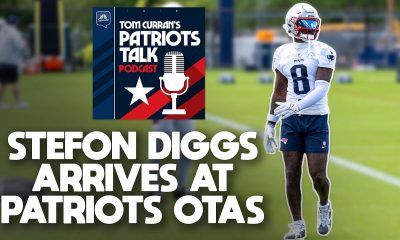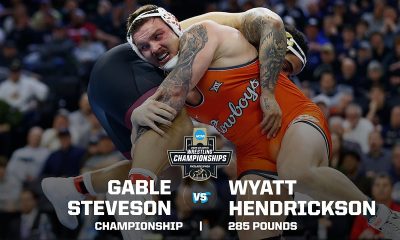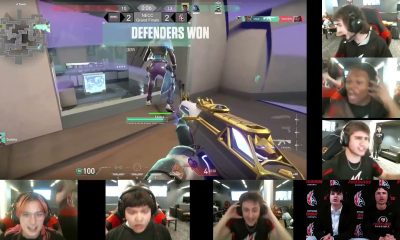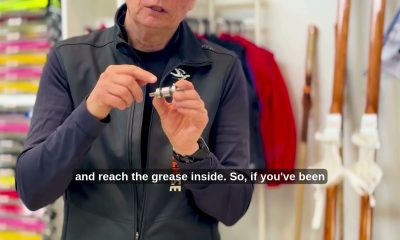NIL
Letters
I’m a longtime fan of collegiate athletics, where changes are happening, and they’re not for the best, in my opinion.Jim PalmerAlso, with NIL programs everywhere, there are millions of dollars involved in the transfer portal process. More than 3,000 football players have already committed to transferring this year. Some schools have successfully used the portal […]



I’m a longtime fan of collegiate athletics, where changes are happening, and they’re not for the best, in my opinion.Jim PalmerAlso, with NIL programs everywhere, there are millions of dollars involved in the transfer portal process. More than 3,000 football players have already committed to transferring this year. Some schools have successfully used the portal to improve their team’s performance, while others have not achieved marked success at all.NIL is not only available to the enrolled, but also to recruits. In recent reports, excessive amounts of NIL dollars are going to high school seniors set to graduate this coming spring. The pool of NIL dollars at each school has a name, e.g., Georgia’s is the Classic City Collective, while Clemson’s is the 110 Society.
More:Dabo Swinney, AD Graham Neff address how Clemson will be handling NIL, revenue sharingAt Clemson, hundreds of student athletes are getting funds from its NIL Collective. With football, the NIL program has become integral to recruiting as well as keeping outstanding athletes because of the Transfer Portal. Many schools have been active in securing talented transfer football and basketball players in the past few years.
NIL (Name, Image and Likeness) and the Transfer Portal are influencing the look of, primarily, football and basketball programs in the Power Five conferences. NIL allows schools to accumulate monetary contributions from donors and businesses to distribute to student-athletes. ClemsonMy overall opinion of NIL and the Transfer Portal is that both are not helping the image of collegiate sports with fans and are increasing the pressure and stress on coaches and athletic directors.
NIL
Greg Sankey answers when vote will happen on College Football Playoff expansion
SEC commissioner Greg Sankey gave a bit of a tease as to when the vote will happen for the College Football Playoff expansion. 14 and 16 team brackets are on the table for potential expansion, beginning as early as the 2026-27 season. How the model will look is anyone’s guess. Team selection process is paramount […]

SEC commissioner Greg Sankey gave a bit of a tease as to when the vote will happen for the College Football Playoff expansion. 14 and 16 team brackets are on the table for potential expansion, beginning as early as the 2026-27 season.
How the model will look is anyone’s guess. Team selection process is paramount considering the 12-team bracket already changed the seeding for this coming season.
But Sankey reminded the good folks out there that the 12-team College Football Playoff is still in its evaluation period. If it’s any better this season, maybe it’ll give the committee and voters a better roadmap for expansion.
“The outer boundary is November 30, December 1 of this year for the ‘26 playoff,” Sankey said on The Dan Patrick Show. “Now keep in mind, when we went to 12 teams, the board said that’ll be the format for 2026, let’s start early if we can, which we obviously did, overall, in a successful way. But what was introduced immediately is, let’s go through these two years and conduct an evaluation.
“So we’re in that evaluation standpoint. A lot of talk about, really 14 or 16. I think 12 is known as it’s kind of a foundation point, but the conversation is about 14 or 16, and then how our teams selected or placed into whatever size bracket exists is the more the headline question.”
Sankey would just make it simple and go by the rankings, regardless of 12 teams or expansion. But with the amount of politicking going on, it might be hard to do so right now until there is a clear and concise selection formula.
“Well, I’ve been one who said over time, I give no allocation,” Sankey said. “So this whole five- seven thing that exists now, I just make it the 12 best teams. And I was clear on that. Now, when we get into rooms, we make political compromises, if you will, small p not like Congress, political compromises, but to achieve an outcome … We’ve spent so much time expanding and working through our own little side arguments about teams and, oh, we can’t do this. We need this. You got to protect this bowl game or that bowl game.
“We never went back to the essence of decision making, which is how our team selected as everyone relocated over the last four or five years, do the analyzes that existed and work for the four-team playoff in 2014, still have the same relevance, and we’re behind that curve in my opinion.”
NIL
The Players Era Festival Could be a Game-Changer for Gonzaga
While other top programs have spent the offseason treating the transfer portal like an all-inclusive buffet, the Zags have, as always, remained deliberate. So far, just two portal additions—Adam Miller from Arizona State and Tyon Grant-Foster from Grand Canyon—plus one high school commit, Parker Jefferson. And though it’s not yet official, Mario Saint-Supery appears all […]

While other top programs have spent the offseason treating the transfer portal like an all-inclusive buffet, the Zags have, as always, remained deliberate. So far, just two portal additions—Adam Miller from Arizona State and Tyon Grant-Foster from Grand Canyon—plus one high school commit, Parker Jefferson. And though it’s not yet official, Mario Saint-Supery appears all but locked in. While other schools have committed to full NIL-fueled rebuilds, the Zags have been a little more intentional than most.
With the Zags, fit always matters more than pedigree, and the program’s adherence to this philosophy is what’s allowed Gonzaga to stay competitive despite being a fraction of the size of just about every other top 25 program.
The Zags have always operated at an NIL disadvantage, but this November, the team will participate in something entirely new to the basketball world. The Players Era Festival is more than another early-season multi-team event like Maui or the Battle 4 Atlantis. It marks an unprecedented structural shift in how programs like Gonzaga can leverage visibility and NIL support without needing a Power Five bankroll to do it.
What Is the Players Era Festival?
The Players Era Festival is a tournament and NIL event held in Las Vegas during Thanksgiving week. It’s built to give college players meaningful NIL opportunities while generating significant college basketball hype early in the season, meaning fans can watch some high-level tournament-style basketball months before March Madness.
Launched in 2024 with eight teams and $9 million in distributed NIL money, the Players Era Festival returns in 2025 with an expanded format and a wider reach. Both the men’s and women’s tournaments will be held in Vegas, with combined NIL payouts expected to exceed $24 million. The men’s side will host 18 programs, including Alabama, Kansas, Baylor, Houston, Michigan, Auburn, and Gonzaga. For the first time, fans will get to see a big field of the best schools in the country in November, and players will have real financial gains at stake in their tournament performance.
If the Festival goes according to plan, non-conference scheduling priorities for smaller schools like Gonzaga could shift dramatically in the coming years.
The event pairs group-stage competition with bracketed play, and all participating teams receive guaranteed NIL compensation for their players, facilitated by the Festival’s partnership with TheLinkU. The model is something brand new in college basketball. NIL dollars in this case aren’t tethered to a school’s alumni base or booster culture but are instead based on team performance. Last year’s tournament winner, the Oregon Ducks, were able to leave Vegas $1.5 million richer in NIL opportunities, and this year’s will leave with significantly more than that.
This is a critical development for schools like Gonzaga. With a total undergraduate enrollment of under 6,000 and a local market that, while passionate, lacks the economic scale of major metro areas, Gonzaga operates without many of the baked-in NIL advantages enjoyed by other top-25 programs. (Of the other 24 teams on ESPN’s preseason top 25, no team has a smaller enrollment. Duke comes in slightly larger by undergrad population, and after that comes Saint John’s, which boasts an enrollment of nearly 16,000 undergrads.) The Festival offers a rare chance to compete on a highly visible national stage early in the season and with a financial floor already in place—no donor blitz or marketing scramble required. Most importantly, no waiting around for the Big Dance for Gonzaga’s players to receive the media attention typically reserved only for the end of the season.
A Hard Truth
Some fans may bristle at the idea that Gonzaga’s NIL situation could be—or has already been—a limiting factor in its recruiting pitch. But any time a school as small as Gonzaga is competing for recruits with the likes of USC (20,000+ undergrads), Kentucky (roughly 24,000), or Texas (over 40,000), the reality of a school’s alumni network and donor base needs to be faced.
By way of painful reminder: Nik Khamenia (Duke), Kingston Flemmings (Houston), and Zoom Diallo (Washington) were all high school targets the Zags pursued aggressively and missed out on. From the transfer portal, GU was reportedly in the mix for—but also missed out on—Malik Thomas (to Virginia), Donovan Dent (to UCLA), Rodney Rice (to USC), Sam Lewis (to Virginia), Andrej Stojakovic (to Illinois), Tyson Eaglestaff (to West Virginia), Silas Demary Jr. (to UConn), Brendan Hausen (to Iowa), and Jordan Ross (to Georgia). All of whom committed elsewhere, to much larger schools, with presumably more NIL money and opportunity than what was available at Gonzaga.
This obviously doesn’t mean that NIL was the biggest factor in the recruitment for these dudes, or even the decisive one, but if the portal has shown us anything in the last few years, it’s that for many, many players, money talks. Loudly.
The Equalizer
That’s what makes the Players Era Festival such a landmark opportunity for the Zags. It’s not about free money; it’s about access to opportunity tied to actual performance. For schools without the massive coffers or big-time corporate sponsors lining up at the door, it creates a foothold—a chance to let basketball speak for itself and weld performance to tangible financial benefits.
The Roster That Fits
For a team like Gonzaga, visibility can be hard to come by in the early part of the season, and although Mark Few always slates a brutal non-conference tilt for his team, by January, much of the national media attention understandably shifts toward the Power Five schools and Blue Bloods. An 81–50 blowout over Portland is a hoot to tune in for if you’re a Zag fan, but it’s not exactly “Must-See TV” for the rest of the college basketball viewing world. The massive media market available to schools in the SEC, for example, is simply not something the Zags have ever been able to compete with, and the Players Era Tournament levels that playing early on and in a highly competitive field, if even just a little bit.
For the first time ever, Gonzaga has an NIL event tailored to reward their winning edge despite the school’s size and scale. Rolling into Vegas and winning the Players Era Festival against schools who have spent this portal cycle doing Scrooge McDuck backstrokes through their endless piles of NIL cash would be just about the most Mark Few thing of the NIL era.
Still Gonzaga
That’s precisely what’s made the last 25 years of Bulldog basketball one of the most compelling stories in all of sports. The fact that a school this size has been able to sustain this level of success in this changing financial landscape is, frankly, astonishing. The Players Era Festival offers another opportunity to prove to recruits that Big Money does not equal Big Wins while still directing some of that Big Money right into the pockets of its players.
Gonzaga’s alumni network and available local business partnerships may be dwarfed by those of other schools; no other program in the country also has two former players—Chet Holmgren (OKC) and Andrew Nembhard (Indiana)—playing starting minutes in this year’s NBA Finals. No massive media market. No pay-for-play cloak-and-dagger “brand partnerships.” Just structure, development, and results. The only other school with players on both NBA Finals rosters is Kentucky—a university that graduates about as many students each year as Gonzaga even enrolls. That comparison says a lot about just how far above its weight class Gonzaga has been punching.
This year’s Players Era Festival won’t crown a new national champion (Oregon somehow beat Alabama in last year’s championship matchup, after all), but it could very well help reshape the perception of what schools like Gonzaga can offer their players in 2025 and beyond. The Zags will never have the booster network and alumni base of Texas, Michigan, or Florida. That’s just a simple fact. Never. But year after year, the Zags have still found a way to stay competitive.
What the Players Era Festival offers is a rare opportunity to showcase that competitive edge while connecting dudes with legit financial opportunities. It’s an NIL move that still lets the basketball speak for itself.
NIL
How Texas Tech’s Million-Dollar Transfer Changes NIL Landscape | Will Compton on Barstool Exit and New Show
Behind the pitching of its $1 million transfer NiJaree Canady, Texas Tech softball ended the powerhouse Oklahoma Sooners’ season Monday night. FOS reporter Amanda Christovich joins Baker Machado and Renee Washington on FOS Today to explain the NIL arms race and how the House v. NCAA settlement could throw a wrench in it. Plus, […]
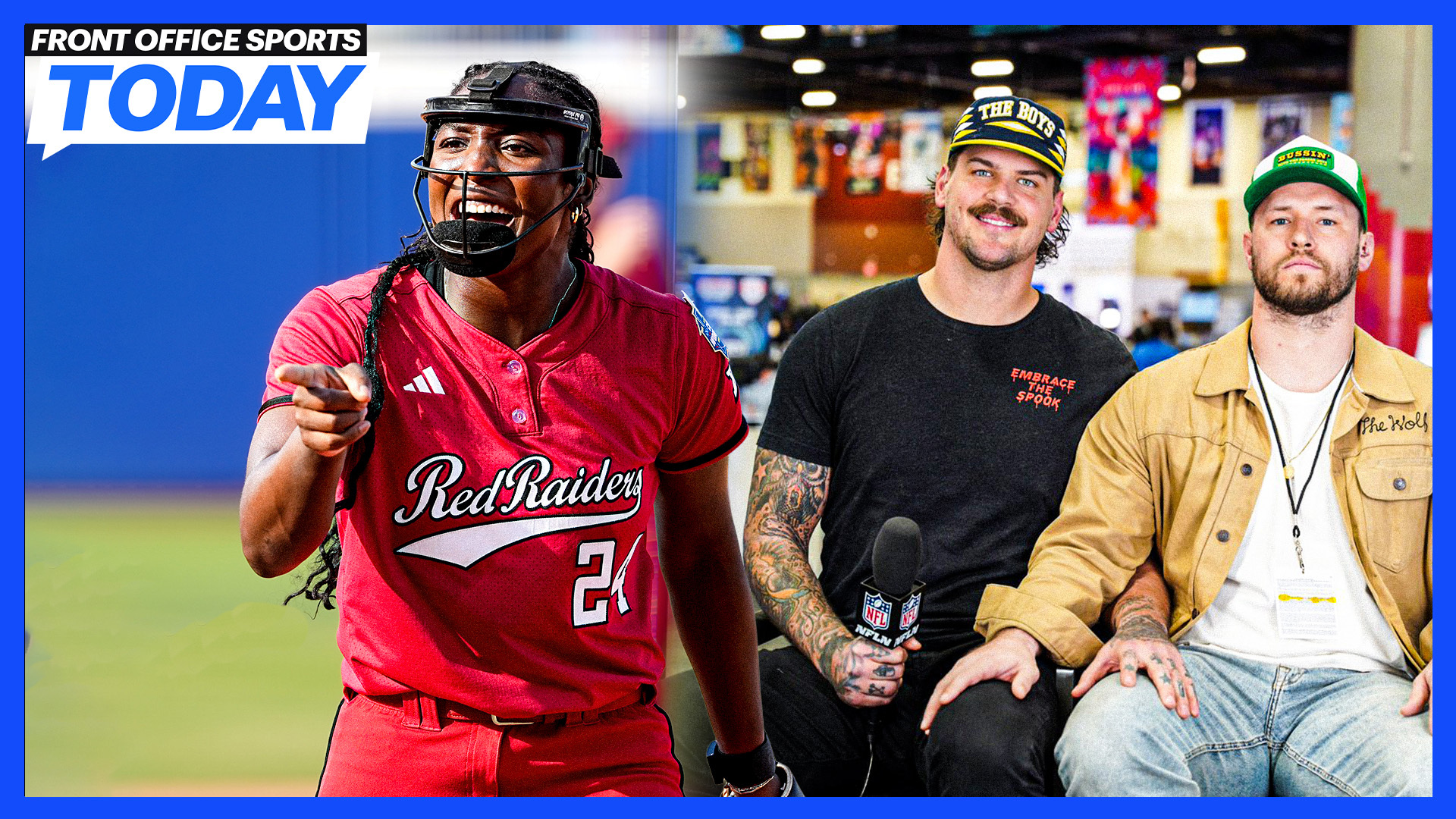
Behind the pitching of its $1 million transfer NiJaree Canady, Texas Tech softball ended the powerhouse Oklahoma Sooners’ season Monday night. FOS reporter Amanda Christovich joins Baker Machado and Renee Washington on FOS Today to explain the NIL arms race and how the House v. NCAA settlement could throw a wrench in it.
Plus, Bussin’ With the Boys co-creator and host Will Compton explains his decision to leave Barstool for FanDuel, why it makes sense for some NFL players to retire early, and how his new podcast For the Dads came to life.
FOST also examines the importance of baseball managers and roasts the Orlando Magic’s new logo.
NIL
How Texas Tech’s Million-Dollar Transfer Changes NIL Landscape | Will Compton on Barstool Exit and New Show
How Texas Tech’s Million-Dollar Transfer Changes NIL Landscape | Will Compton on Barstool Exit and New Show – Front Office Sports […]

NIL
Million Dollar Pitching Star Makes National Impact During Texas Tech Historical Posts
The Red Raiders are making history in their debut trip to Oklahoma City for Women’s College World Series (WCWS) and NiJaree Canady is a big part of this historic run. Texas Tech is headed to the national championship series and this is the first time in WCWS history that a program has made it this […]
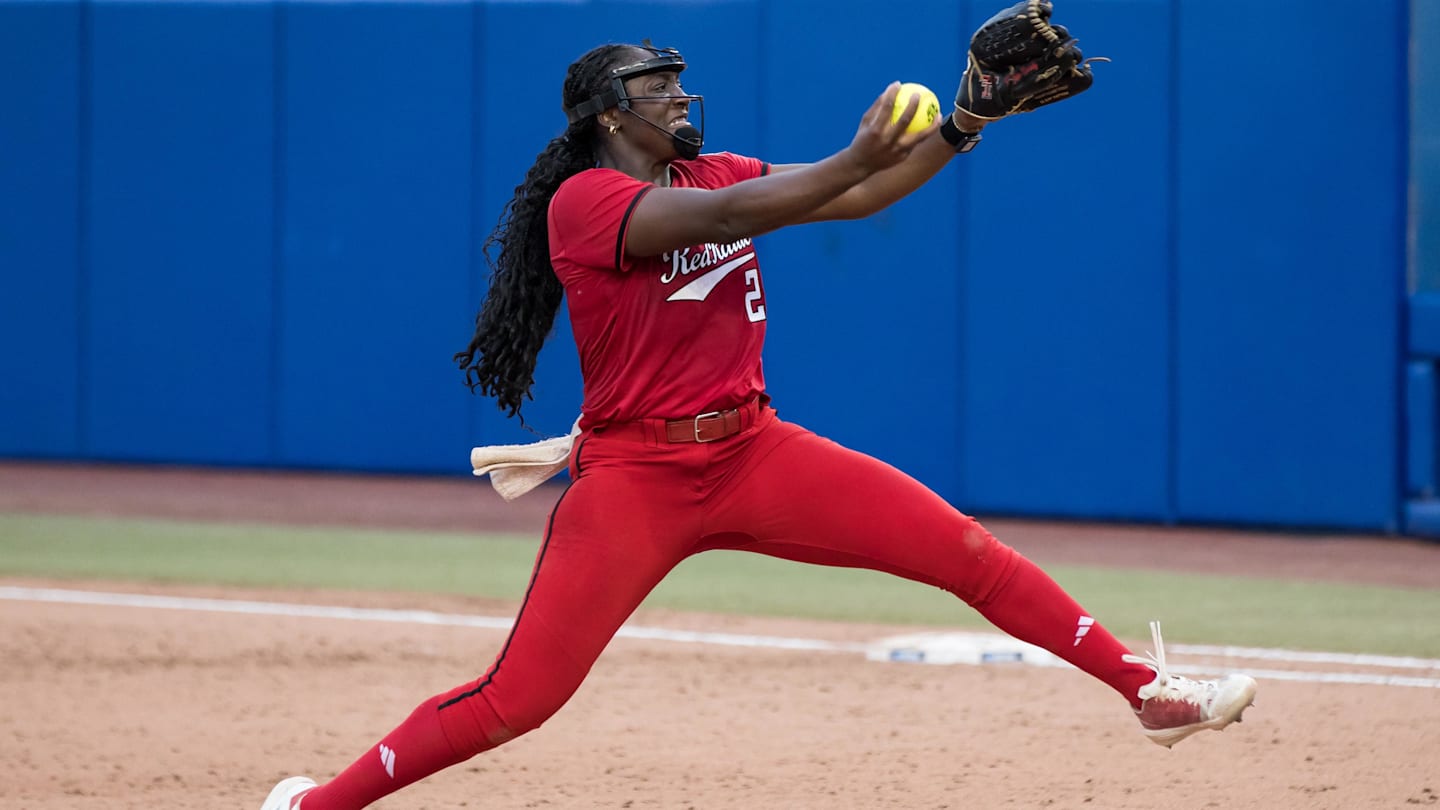
The Red Raiders are making history in their debut trip to Oklahoma City for Women’s College World Series (WCWS) and NiJaree Canady is a big part of this historic run.
Texas Tech is headed to the national championship series and this is the first time in WCWS history that a program has made it this far in their debut trip to OKC since the Oklahoma Sooners did it in 2000 per Brad Crawford with CBS Sports.
The team that the Red Raiders just beat to advance: the Oklahoma Sooners. The Raiders were also on a 37-game losing streak to the Sooners prior to their game Monday. They punched their ticket to the title game with a 3-2 win. By the time Canady left the pitching circle the Sooners had only five total hits.
The second Canady hit the transfer portal Texas Tech made her their main priority. She started her collegiate career with the Stanford Cardinals and she decided to pursue other programs for the rest of her career.
Texas Tech’s NIL Collective, offered her a one-year $1,050,24 contract just three days after she had entered the portal stated by Canady in an interview with Dave Wilson on ESPN. Canady also made it clear in her interview that if she didn’t believe in the program she wouldn’t have moved to Lubbock.
“I feel like people thought I heard the number and just came to Texas Tech, which wasn’t the case at all,” said Canady and she also mentioned that she took over a month to think the contract over.
Canady went into a program that had only won 31% of its conference games since the start of Big12 Conference. By the end of league play this season they were the conference champions for the first time in program history.
Canady is the USA Softball Collegiate Player of the Year for many reasons. With the Red Raiders she has a 30-5 record and an incredibly low 0.89 ERA as stated on the Red Raiders’ website.
Her list of accolades are lengthy including: NFCA First Team All-American (2024), PAC 12 Pitcher of the Year (2024), Women’s College World Series All-Tournament Team (2023,2024) among many, many other awards.
While there is a lot of controversy surrounding NIL contracts Canady has showed that there are positives to letting players make money off their names as she put Texas Tech Softball on the map this year. Even if they do not win the title this year this has ultimately changed the program for the better.
NIL
Ex-California high school football player suing to overturn state’s NIL rules
Every paradigm-shifting change to college athletics in the past decade-plus has started in California. The landmark O’Bannon v NCAA lawsuit, filed in 2009 by former UCLA basketball player Ed O’Bannon, was heard in the summer of 2014 by the US District Court in Northern California. The first state law allowing college athletes to profit off their […]

Every paradigm-shifting change to college athletics in the past decade-plus has started in California.
The landmark O’Bannon v NCAA lawsuit, filed in 2009 by former UCLA basketball player Ed O’Bannon, was heard in the summer of 2014 by the US District Court in Northern California. The first state law allowing college athletes to profit off their name, image and likeness was signed in 2019 by California governor Gavin Newsom. The ongoing House v NCAA lawsuit, whose settlement is expected any day now and will allow schools to share revenue directly with athletes, is being ruled upon by the same judge and the same court as O’Bannon.
Now, a new lawsuit, filed in California, is attempting to do for high school sports what the above lawsuits and bills did for college athletics.
As reported by Front Office Sports, former California high school athlete Dominik Calhoun has filed a class-action lawsuit against the California Interscholastic Federation, arguing the organization’s rules around NIL are a violation of antitrust law.
Crucially, California is one of the states that already allows its high school athletes to participate in the NIL market. In 2022, Bronny James and JuJu Watkins — classmates at Sierra Canyon High School at the time — signed publicity deals with Nike. However, CIF rules forbid high schools from sharing revenue directly with athletes (as will happen in the NCAA soon, brought forth by House) and also prevents booster clubs from forming collectives to recruit and retain athletes, as happens currently in college athletics.
“Collectively, these rules and regulations forbid CIF member schools or CIF Sections from sharing the revenue they receive by licensing their student-athletes’ NIL with those very student-athletes, artificially fixing the price student-athletes are compensated for their NIL at zero,” the complaint read.
Calhoun played football and ran track at Pittsburg High School, near Oakland. A 3-star recruit, he is now preparing to begin his freshman season as a defensive back at Boise State.
But, Calhoun’s complaint argues, CIF rules illegally barred him from participating in the economic value that his efforts generated for Pittsburg High School and the CIF.
“This case challenges rules that unfairly prevent high school athletes in California from being compensated for their hard work and the use of their name, image, and likeness—even as others profit from them,” Yaman Salahi, co-lead attorney representing Calhoun, told FOS. “It’s the logical next step after the reforms inaugurated by successful antitrust litigation on the collegiate level. Corporations see a lot of untapped economic value in high school athletics, and we want to ensure that value is shared equitably with the athletes that create it.”
Of course, suing to change rules in college athletics was worthwhile because there was a verifiable pot of gold on the other end of the rainbow. College athletics is a multi-billion dollar business. High school athletics is…well, I personally don’t know what it is. Most every high school program fundraises because the budget provided by the school would not make ends meet. The vast, vast majority of high school athletes have zero market for their services, either on the open NIL market or via collectives. The vast majority of principals would probably tell you over a frosty beverage they’d sooner stop sponsoring athletics than cut checks to their athletes as pseudo-employees.
And yet, many of the same statements could have been said about college athletics in recent years, and within a month’s time dozens of schools who do not turn a profit on paper will cut checks to athletes whom the vast majority of their own fans could not identify out of uniform.
So, I do not know where Calhoun’s lawsuit will go, if it goes anywhere at all. But I do know that if, five years from now, the national economic landscape of high school athletics is irrevocably changed, history tells us that change will have started in California.
-

 College Sports2 weeks ago
College Sports2 weeks agoPortal Update – Basketball and Gymnastics Take Hits
-

 Rec Sports3 weeks ago
Rec Sports3 weeks agoThe Program, a New Basketball Training Facility, Opening in Greenpoint This September
-

 College Sports2 weeks ago
College Sports2 weeks agoPortal Update – Basketball and Gymnastics Take Hits
-

 Professional Sports2 weeks ago
Professional Sports2 weeks agoJon Jones answers UFC retirement speculation as fans accuse champion of 'holding the belt …
-

 NIL1 week ago
NIL1 week ago2025 NCAA Softball Tournament Bracket: Women’s College World Series bracket, schedule set
-

 Health2 weeks ago
Health2 weeks agoBYU women's basketball guard injures ACL twice
-

 Youtube2 weeks ago
Youtube2 weeks agoXavier Legette taught Marty Smith his signature celly
-

 Youtube3 weeks ago
Youtube3 weeks ago -
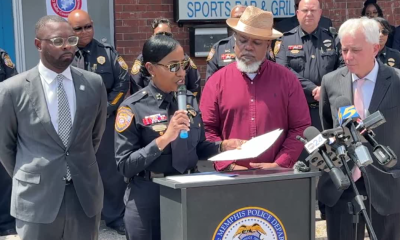
 Rec Sports3 weeks ago
Rec Sports3 weeks agoMemphis sports bar shut down, deemed nuisance | News
-

 Youtube3 weeks ago
Youtube3 weeks agoThe WILDEST Round 1 NBA Playoff Endings of the Last 25 Years
| Pt. 1




